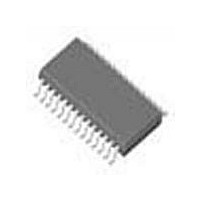LM4817MH National Semiconductor, LM4817MH Datasheet - Page 12

LM4817MH
Manufacturer Part Number
LM4817MH
Description
Manufacturer
National Semiconductor
Datasheet
1.LM4817MH.pdf
(21 pages)
Specifications of LM4817MH
Operational Class
Class-AB
Audio Amplifier Output Configuration
2-Channel Stereo
Output Power (typ)
1.1x2@8OhmW
Audio Amplifier Function
Speaker
Total Harmonic Distortion
0.13@8Ohm@1W%
Single Supply Voltage (typ)
5V
Dual Supply Voltage (typ)
Not RequiredV
Power Supply Requirement
Single
Rail/rail I/o Type
No
Power Supply Rejection Ratio
67dB
Single Supply Voltage (min)
3V
Single Supply Voltage (max)
5.5V
Dual Supply Voltage (min)
Not RequiredV
Dual Supply Voltage (max)
Not RequiredV
Operating Temp Range
-40C to 85C
Operating Temperature Classification
Industrial
Mounting
Surface Mount
Pin Count
28
Package Type
TSSOP EP
Lead Free Status / Rohs Status
Not Compliant
Available stocks
Company
Part Number
Manufacturer
Quantity
Price
Company:
Part Number:
LM4817MH
Manufacturer:
SKYWORKS
Quantity:
6 564
Part Number:
LM4817MH
Manufacturer:
NS/国半
Quantity:
20 000
Company:
Part Number:
LM4817MHX/NOPB
Manufacturer:
NS/TI
Quantity:
400
www.national.com
Application Information
BRIDGE CONFIGURATION EXPLANATION
* Refer to the section Proper Selection of External Components, for a detailed discussion of C
As shown in Figure 1, the LM4817 consists of two pairs of
operational amplifiers, forming a two-channel (channel A and
channel B) stereo amplifier. (Though the following discusses
channel A, it applies equally to channel B.) External resistors
R
internal 20kΩ resistors set Amp2A’s gain at -1. The LM4817
drives a load, such as a speaker, connected between the two
amplifier outputs, -OUTA and +OUTA.
Figure 1 shows that Amp1A’s output serves as Amp2A’s
input. This results in both amplifiers producing signals iden-
tical in magnitude, but 180˚ out of phase. Taking advantage
of this phase difference, a load is placed between -OUTA
and +OUTA and driven differentially (commonly referred to
as "bridge mode"). This results in a differential gain of
Bridge mode amplifiers are different from single-ended am-
plifiers that drive loads connected between a single amplifi-
er’s output and ground. For a given supply voltage, bridge
mode has a distinct advantage over the single-ended con-
figuration: its differential output doubles the voltage swing
across the load. This produces four times the output power
when compared to a single-ended amplifier under the same
conditions. This increase in attainable output power as-
sumes that the amplifier is not current limited or that the
f
and R
Pin out shown for the LLP package. Refer to the Connection Diagrams for the pinout of the TSSOP package.
i
set the closed-loop gain of Amp1A, whereas two
A
VD
= 2 x (R
f
FIGURE 1. Typical Audio Amplifier Application Circuit
/ R
i
)
(1)
12
output signal is not clipped. To ensure minimum output sig-
nal clipping when choosing an amplifier’s closed-loop gain,
refer to the Audio Power Amplifier Design section.
Another advantage of the differential bridge output is no net
DC voltage across the load. This is accomplished by biasing
channel A’s and channel B’s outputs at half-supply. This
eliminates the coupling capacitor that single supply, single-
ended amplifiers require. Eliminating an output coupling ca-
pacitor in a single-ended configuration forces a single-supply
amplifier’s half-supply bias voltage across the load. This
increases internal IC power dissipation and may perma-
nently damage loads such as speakers.
POWER DISSIPATION
Power dissipation is a major concern when designing a
successful single-ended or bridged amplifier. Equation (2)
states the maximum power dissipation point for a single-
ended amplifier operating at a given supply voltage and
driving a specified output load
However, a direct consequence of the increased power de-
livered to the load by a bridge amplifier is higher internal
power dissipation for the same conditions.
B
size.
P
DMAX
= (V
DD
)
2
/ (2π
2
R
L
) Single-Ended
20078101
(2)











